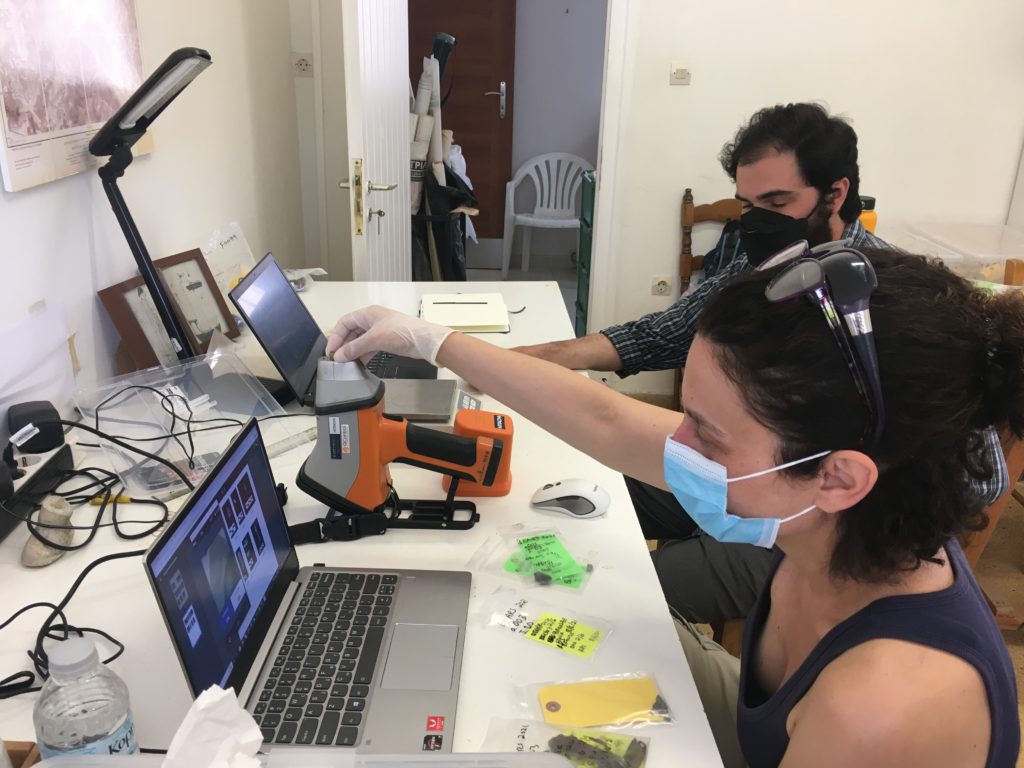
BEARS 2022 team member Braden Cordivari wrote this helpful explanation of how pXRF works. Thank you, Braden!
“Portable X-ray fluorescence spectroscopy (pXRF) is a non-invasive, non-destructive method of surface chemical analysis. The instrument works by directing an X-ray beam at the object and converting the signal it receives back to elemental composition. It can do this because the X-rays excite the atoms in the object and cause them to release energy that is characteristic of different elements. pXRF is well-suited to characterizing archaeological metals and slags to help researchers understand what something is made of. For instance, you can use pXRF to distinguish objects made of bronze (an alloy of copper and tin) from brass (copper and zinc).”
